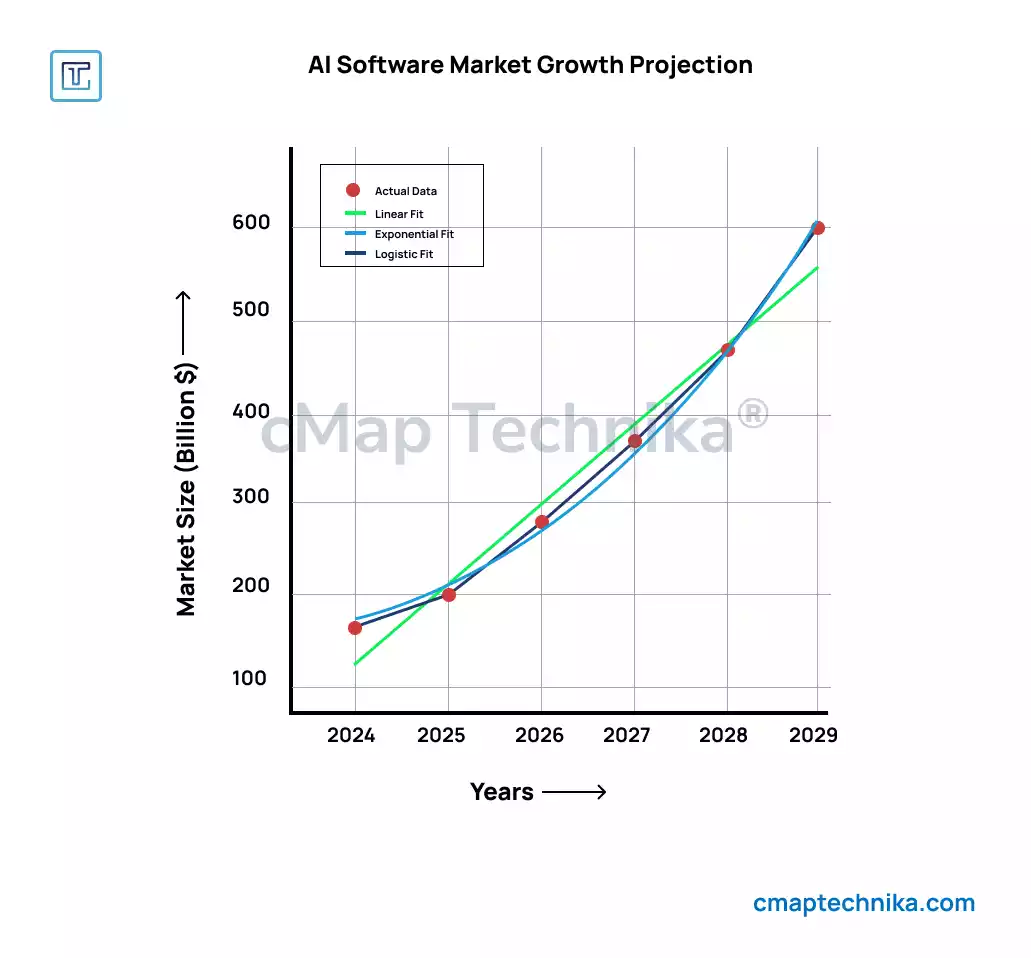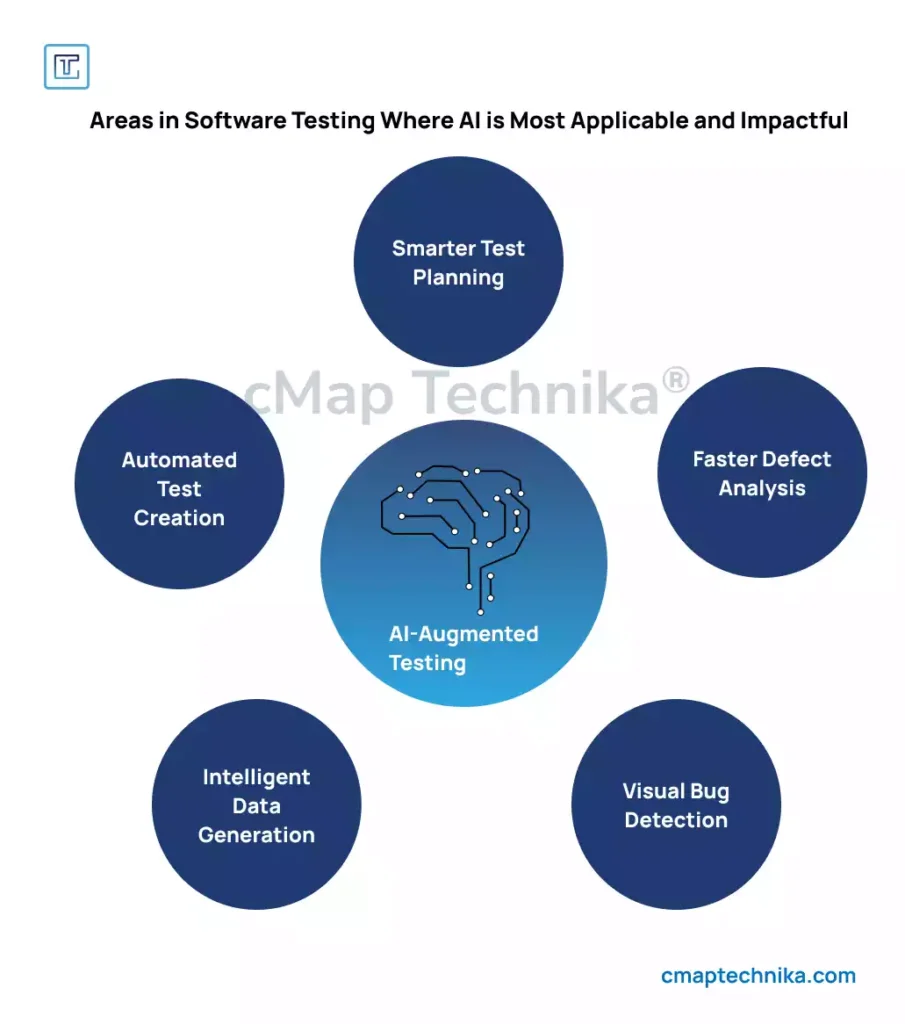Introduction
Artificial Intelligence (AI) is revolutionizing software development, reshaping how applications are built, deployed, and maintained. AI-driven automation, machine learning (ML) algorithms, and generative AI tools are not only enhancing developer productivity but also redefining traditional methodologies. Companies are leveraging AI to optimize workflows, improve software quality, and reduce development time, making it a core component of modern software engineering.
As businesses navigate this transformation, AI’s role extends beyond automating coding tasks—it is influencing the entire software development lifecycle (SDLC), from initial design to deployment and maintenance. This business insight explores the impact of AI on software development, detailing key trends, industry case studies, challenges, and future implications. By analyzing real-world applications from leading technology firms, we aim to provide a strategic perspective on AI’s role in the evolving software development landscape.
The Growing Influence of AI in Software Development

Market Trends and Industry Adoption
AI adoption in software development is accelerating at an unprecedented rate. According to recent market research, the global AI software market is projected to grow from $127.1 billion in 2024 to $439.9 billion by 2029, reflecting a CAGR of 28.2%. This surge underscores the shift from AI experimentation to full-scale integration in enterprise development strategies.
- Automated Code Generation: AI-driven tools like GitHub Copilot and OpenAI’s Codex have reduced coding time by up to 55% for developers, significantly improving efficiency.
- AI-Powered Testing and Debugging: AI-based testing platforms like Test.ai and Mabl are reducing bug detection times by 40-60%, enhancing software reliability.
- Predictive Analytics in DevOps: AI-driven monitoring tools such as Dynatrace and Datadog optimize cloud operations and incident response times, minimizing system downtime.
Case Study 1: Microsoft’s AI-Driven Development with GitHub Copilot
Microsoft has been a pioneer in integrating AI into software development, with GitHub Copilot serving as a prime example of how artificial intelligence can revolutionize coding. Powered by OpenAI’s Codex, Copilot functions as an AI-powered coding assistant, suggesting entire lines or even blocks of code, reducing manual effort, and enhancing developer productivity.
Key Impacts of GitHub Copilot:
- Boost in Developer Productivity: Developers using Copilot report a 30-40% increase in efficiency, as the AI-generated suggestions speed up the coding process and reduce time spent on repetitive tasks.
- Faster Time-to-Market: Companies integrating Copilot into their development workflows have observed significant reductions in development cycles, enabling them to release new features and applications faster.
- Enhanced Focus on Innovation: By automating routine coding tasks, Copilot allows developers to concentrate on complex problem-solving, software architecture, and innovation, rather than spending time on boilerplate code.
- Improved Code Quality and Consistency: The AI is trained on best coding practices and vast repositories of open-source projects, helping developers write more reliable, structured, and optimized code while minimizing errors.
By implementing AI-powered tools like GitHub Copilot, Microsoft has transformed software development into a more efficient, intelligent, and innovation-driven process, proving that AI can act as a true co-pilot in modern coding.
How AI is Transforming Software Development Processes
1. AI-Augmented Software Design and Development
AI is influencing software design by enabling rapid prototyping and optimizing user experience (UX) design through predictive analytics.
Example: Adobe’s AI-powered tool, Sensei, analyzes user interactions to enhance UI/UX design, allowing businesses to create highly personalized software interfaces.
- Predictive UI Design: AI can analyze large datasets of user interactions and predict user behavior, leading to more intuitive applications.
- Rapid Prototyping: AI-driven design tools can automatically generate interface layouts, accelerating the development of user-friendly software.
2. AI in Software Testing and Quality Assurance

Traditional software testing is time-consuming, but AI is streamlining the process by automating test case generation and execution.
Example: Google’s AI-driven testing framework, TestingBot, automatically identifies code vulnerabilities and security flaws, improving test accuracy by 60%.
- Automated Bug Detection: AI can identify issues in real time, reducing manual debugging efforts.
- Self-Healing Code: AI-based testing tools can suggest and implement fixes, ensuring continuous software improvement.
3. AI in DevOps and Continuous Integration/Continuous Deployment (CI/CD)
AI-powered analytics are helping DevOps teams detect anomalies in code deployments and predict system failures before they occur.
Example: Netflix uses AI-based Chaos Engineering to simulate failures in its cloud infrastructure, ensuring high availability and reliability.
- Anomaly Detection: AI-driven monitoring systems flag irregularities before they cause downtime.
- Predictive Infrastructure Scaling: AI helps optimize cloud resource allocation, improving cost efficiency.
Case Study 2: Tesla’s AI-First Approach to Software Development
Tesla has redefined software development in the automotive industry by adopting an AI-first strategy, particularly in the evolution of its Full Self-Driving (FSD) software. Unlike traditional automakers that rely on periodic software updates, Tesla employs artificial intelligence to continuously refine its autonomous driving algorithms using vast amounts of real-world data.
Key AI Innovations in Tesla’s Software Development
- AI-Powered Over-the-Air (OTA) Updates: Tesla vehicles receive continuous software enhancements through OTA updates, allowing for real-time improvements in vehicle performance, safety, and user experience. These updates are driven by AI-powered analytics, which assess system performance and identify areas for optimization.
- Predictive Maintenance: Tesla utilizes AI to monitor vehicle health and detect potential failures before they occur. By analyzing sensor data, AI-driven diagnostics can predict component wear and alert drivers or service centers, reducing unexpected breakdowns and lowering maintenance costs by up to 30%.
- Machine Learning for Autonomous Driving: Tesla’s AI processes over 1 billion miles of real-world driving data weekly, allowing its self-driving models to continuously improve. Neural networks analyze this vast dataset to enhance lane detection, obstacle recognition, and driving decision-making, making autonomous navigation safer and more efficient.
- Fleet Learning and Collective Intelligence: Tesla’s neural network aggregates data from millions of vehicles on the road, enabling a form of collective intelligence. Insights from one vehicle’s experience are shared across the fleet, ensuring that every Tesla benefits from the learning process. This creates a self-improving ecosystem where the entire network evolves over time.
Tesla’s AI-first approach exemplifies how artificial intelligence can be deeply integrated into software development, enabling real-time enhancements, predictive analytics, and a continuously evolving product. By leveraging AI across multiple facets—from self-driving technology to vehicle maintenance—Tesla sets a benchmark for AI-driven innovation in software development.
Challenges and Considerations

Despite its advantages, AI integration in software development presents several challenges:
- Skill Gaps in AI and ML: A lack of AI expertise among traditional software developers is a growing concern.
- Job Market Disruptions: While AI boosts productivity, junior developer roles may decline as automation takes over repetitive tasks.
- Ethical Concerns: AI-generated code may inherit biases or security vulnerabilities, requiring careful oversight.
- Data Privacy and Security: The increasing reliance on AI-driven development raises concerns about proprietary data and intellectual property protection.
Industry Perspective: Salesforce’s AI executive recently highlighted the shift in required skill sets, stating that problem-solving and critical thinking are now more valuable than traditional coding skills.
Future Outlook and Strategic Implications
As AI continues to evolve, its role in software development will become more integral, reshaping workflows, enhancing productivity, and driving innovation. The coming years will witness a shift from AI as a mere tool to AI as a true collaborator, transforming the way software is designed, built, and maintained.
- Greater AI-Human Collaboration: Rather than replacing developers, AI will act as an intelligent co-pilot, assisting with code generation, debugging, and optimization. Tools like GitHub Copilot and OpenAI’s Codex are early examples of how AI can streamline coding, allowing developers to focus on higher-level problem-solving and creative aspects of software design.
- Expansion of No-Code/Low-Code Platforms: AI will further democratize software development by enhancing no-code and low-code platforms, enabling users with little to no programming experience to build complex applications. This shift will reduce development time, lower costs, and empower businesses to create custom solutions without relying heavily on technical expertise.
- AI-Driven Security and Compliance: With cyber threats becoming more sophisticated, AI-powered security solutions will play a crucial role in identifying vulnerabilities, detecting anomalies, and automating compliance checks. Machine learning models will continuously adapt to new threats, strengthening software resilience against cyberattacks.
- Adaptive AI in Enterprise Development: AI will enable highly customized, real-time adaptable enterprise software solutions, capable of dynamically adjusting to changing business needs. AI-driven systems will optimize workflows, predict infrastructure needs, and enhance decision-making, making enterprises more agile and responsive.
As AI’s influence grows, businesses must strategically integrate AI-driven development practices to remain competitive. Organizations that embrace AI for software scalability, security, and automation will gain a significant edge, ensuring their technology stacks are not only future-proof but also primed for continuous innovation.
Conclusion
AI is fundamentally reshaping software development, driving efficiency, innovation, and scalability. From Microsoft’s GitHub Copilot to Tesla’s AI-driven software updates, businesses are leveraging AI to redefine how software is built and maintained. However, successful adoption requires overcoming skill gaps, ensuring ethical AI use, and preparing for an evolving job market.
Organizations that embrace AI-driven development methodologies will gain a competitive edge, fostering innovation in an increasingly digital world. Companies that strike a balance between AI automation and human oversight will be best positioned to leverage AI’s full potential while mitigating its risks. As AI capabilities continue to advance, its role in software development will shift from an assistive tool to an essential component of the development process, marking the next era of intelligent software engineering.







